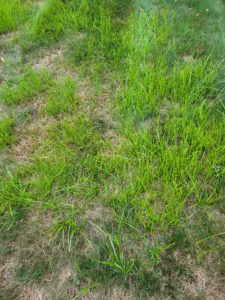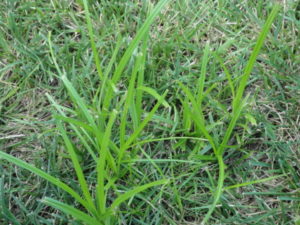Also known as chufa, nutgrass, or watergrass, nutsedge isn’t actually a weed, but a Sedge. Its leaves grows more rapidly than turf in the hot summer months and, during cooler months, grows much more slowly. This makes it a bit more difficult to spot amongst standard turfs at times.
One way to easily identify nutsedge is the take a look at it’s stem. If it has a sort of triangular shape (felt by rolling it in your fingertips), that means it’s nutsedge! Additionally, their leaves have a slick, shiny, or waxy appearance, are arranged in groups of three, and are greenish-yellow in color. Lastly, they will produce a golden seed-head, although this is rare to occur if the lawn is on a consistent mowing schedule.
A common first instinct with any weed is to pull it to get it out of the lawn, but with Nutsedge, this could be the cause of a major infestation! The roots of the plant have what appear to be little “nutlets”, but are actually what are called tubers or rhizomes. These are underground stems that form into a major root network and sprout more and more plants as time goes on. When you pull the plant, dormant tubers are then activated and will sprout more plants, causing the network to grow and the Nutsedge to run rampant.
As stubborn as this weed sounds, the treatment plan is not as much so. The best thing to do is to pull the plant as early on in its lifespan as possible, before the tubers can really root themselves into the grass and create that pesky network. If you miss this stage, don’t worry! Specialized weed controls (that Lawn Doctor can provide) should do just the trick!



